When you want to customize a notebook or select a notebook for yourself, the type of paper is one crucial thing that needs to consider. Many different classifications and qualities are available, making it challenging to decide just what kind might work best with your ideas! Luckily we have listed below some common varieties of paper used in notebooks based on our personal experience; hopefully, this guide helps you choose the type of paper that’s right for your needs.
Wood-free paper
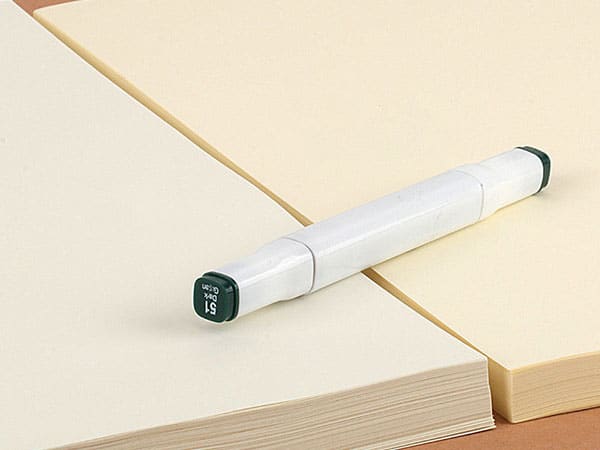
Wood-free paper is a prevalent paper with customers and is cost-effective.
The material used for paper making is wood pulp, coated with gum on both sides of the paper during the papermaking process to improve its surface physical properties. Bleached chemical wood pulp, bamboo pulp, rag pulp, and grass pulp copying, but also appropriate more filler and gum pulp, copying on the long net paper machine, and made after calendering. Its acidity and alkalinity are also close to neutral or weakly alkaline. The paper grammage is 60-180 gsm—Uniform absorption of ink and good smoothness. Stretching is slight, the words written out are clearer, the texture is tight and opaque, and the water resistance is strong. Mainly for flatbed, offset printing presses, or other printing presses, when printing more advanced color printing.
The wood-free paper generally makes notebooks of a higher grade. So we recommend the cover material to be better than the book block material to make the inside and outside of the notebook match, such as leather cover notebooks.
In addition to being suitable for the inside of notebooks, it is also ideal for printing single or multi-color book covers, pictorials, maps, posters, and various packaging items on paper.
What is the difference between different grammages of wood-free paper?
The grammage of wood-free paper is generally 60 to 120 gsm, but there is also high gsm such as 150 or 180 gsm. The most widely used for general purposes would be around 70 to 120 gsm, which works well with most notebooks. When you need to add pockets on a notebook’s front or back endpapers, we typically use 150 gsm.
And we recommend 80 gsm wood-free paper when it comes to writing. This grammage can be found in most notebooks which means that this type will provide you with a great experience. It feels better when you write but does not look as high-class compared with 100 gsm, which is stiffer paper.
100 gsm paper is the perfect choice for people who are writing with greater force. Even with a fountain pen type, the ink will not blot. 70 gsm is thin, more transparent, and 120 gsm can be said to be a thick paper; both we rarely use.
Color selection of wood-free paper
Wood-free paper can produce various colors through mixing with multiple dyes in the production process, including ordinary primary colors, unique primary colors, dyeing, etc.
Ivory white and beige cream wood-free paper is the perfect choice for people who like to write. This type has a very soft color that doesn’t irritate your eyes in intense light or make them tired when you look at it over long periods.
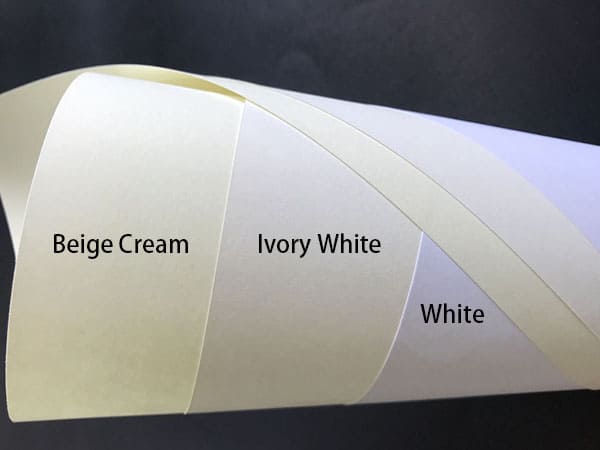
Coated Paper
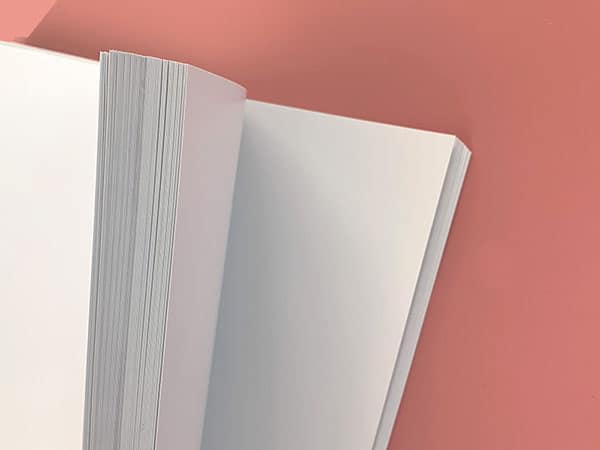
Also known as art paper, the coated paper has a smooth surface, high whiteness, and good ink absorption. Compared with coated paper, matt coated paper is more high-grade, and the fineness is better, but not as bright as coated paper in printing. The paper grammage is 70 to 250 gsm. The smoothness of coated paper is generally more than ten times higher than wood-free paper. Some Japanese brand planners also use 65-70 gsm coated paper as the core; the strong paper does not blot ink.
The ink on coated paper adheres quickly, dries quickly, and can be lined with luster after drying with a thin ink layer, clear images, and glossy dots. The dimensional stability of coated paper is also better than offset paper, and printing on coated paper can meet the requirements of precise overprinting. It works well with varnishes, UV coatings, and foil stamping as design elements. So if you need to print a particular page in your notebook to promote your company’s message, consider using coated paper.
But coated paper bound into a heavyweight book, not conducive to carry. Another example is that the paper surface is not resistant to folding, leaving marks after folding. Exceedingly the most afraid of moisture, stored for a long time, or improper storage, the paper surface will produce mold, especially in the hot and humid season. There may also cause the paper surface to off powder. Coated paper is also not suitable for direct exposure to sunlight. Therefore, you can consider using other types of paper to print the need for long-term storage of printed matter.
Acid-free paper
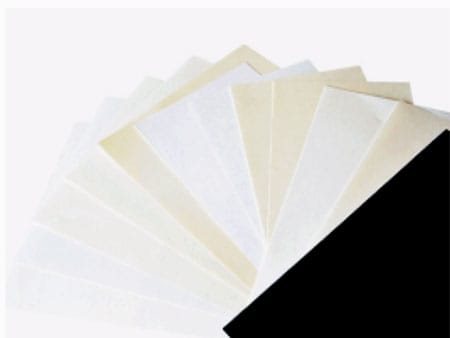
Acid-free paper is more expensive and has firm, Long-term preservation, and near-neutral characteristics. It is made from plant fiber pulp that has been specially treated (to eliminate the organic acids present) and then produced on a paper machine. The weight and color of the paper depend on the purpose.
The acid content of the paper is the best indicator of its longevity. The acidity of any paper increases with age and exposure to sunlight and air. Acid-free papers generally have a pH of 7.5 or higher and don’t contain ground wood pulp, making them stronger and more paper-ready for extended use and preservation. The notebooks of MOLESKINE and LEUCHTTURM1917 brands use this paper, and the book preserves the contents for a life of more than 200 years.
I have consulted with some of my end customers and found that acid-free paper is not well suited to fountain pens. Although the weaknesses can be improved by processing such as LEUCHTTURM’s Ink proof technology, if you want your notebooks to have the advantage of fountain pen writing, it is best not to use it as a preference.
Tomoe River Paper
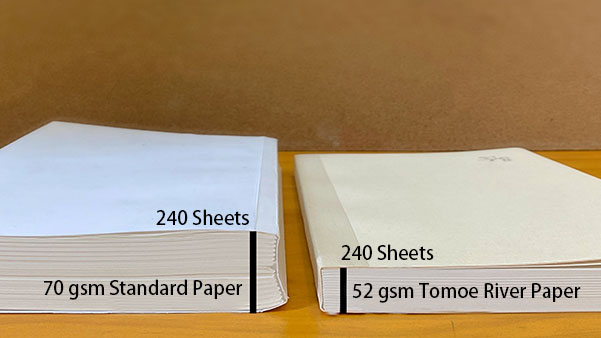
Tomoe River paper is made by Tomoegawa Co., Ltd. in Japan, mainly from tree pulp extracted from the forest using sustainable technology. If there is any difference between the other papers, it is nothing more than very thin and soft; hundreds of sheets of paper set in a book look very thin and light. The color of the paper is mainly cream and bright white. Although the paper is thin and light, ink absorption speed is breakneck; after writing with colored ink, the ink reflection phenomenon after drying is also stunning.
HOBONICHI, DAVINCI, and several Japanese brands are using this paper. The paper price is also high. Please note there is also a risk of blurred with oil-based pens for Tomoe River Paper. Still, the tolerance to watercolor pens is outstanding.
Stone Paper

Stone paper is a unique paper made by grinding waste limestone produced by the mining and construction industries into powder and then synthesizing it with non-toxic binders. This paper production process does not require strong acid or alkali bleaching. It does not produce any waste water or waste residue, which is very safe and environmentally friendly.
Karststonepaper and Imstone notebooks are made of stone paper. The notebook is waterproof, anti-static, moth-proof, and particularly strong and durable, very difficult to tear. So you do not have to worry about pen nibs scratching the paper or coffee spilled on the book. Since the paper made of the stone does not have a texture, so the ink will not faint along the paper grain.
But please note that the stone paper is completely biodegradable, so continuous sunlight exposure for about six months will automatically brittle into a broken eggshell shape. And the ink is not very easy to dry, so I recommend you to write with a ballpoint pen or pencil.
Recycled paper
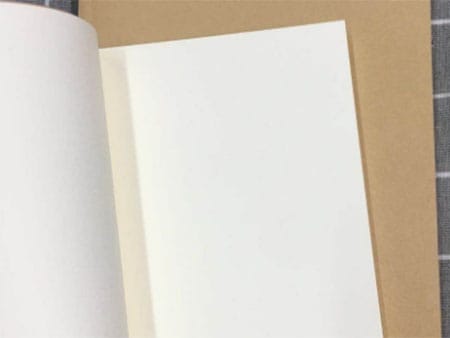
Recycled paper is a very environmentally friendly paper, mainly made from waste paper, which is shredded and de-colored to make pulp to produce paper through a variety of processes. As recycled paper does not add a variety of bleach and fluorescent agents, it presents the appearance of the book’s original beauty – a light beige, but also has a protective effect on vision.
MUJI uses recycled paper, which has a low price and smooth writing compared with tomoe river paper and acid-free paper. However, some brands of ink may have blotting.
Writing Paper
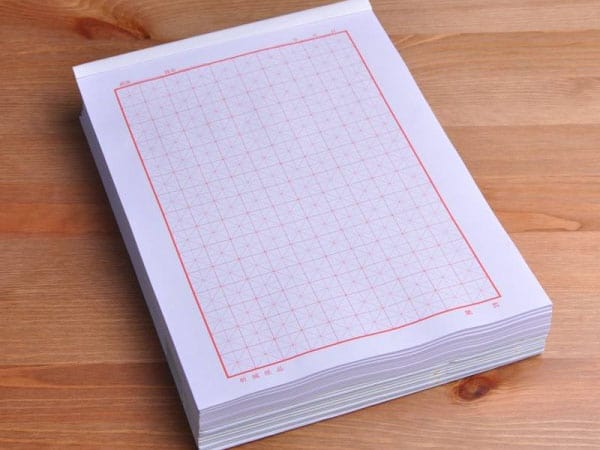
Writing paper is used for low-grade printing, a cultural paper with high consumption. It has the advantages like white, smooth writing properties and good water resistance, suitable for forms, exercise books, account books, record books, etc. Common grammage is 45, 50, 60, 70, 80, 85, 90, 100, 120 gsm. The higher the weight of this type of paper, the less likely the ink will penetrate. Its advantage is relatively inexpensive, and the disadvantage is that compared with other paper, the surface will look a little rougher.
Conclusion
So what’s your favorite kind of paper type? Wood-free, acid-free, or coated? If high grade and cost-effectiveness are vital considerations, go with wood-free paper. If long-term storage is more important, consider using acid-free paper. Suppose you want better printing effects involved in using coated paper. If you have a limited budget, you should consider recycled/writing papers instead.
Want to know more about notebook customization? Visit our customization page.

